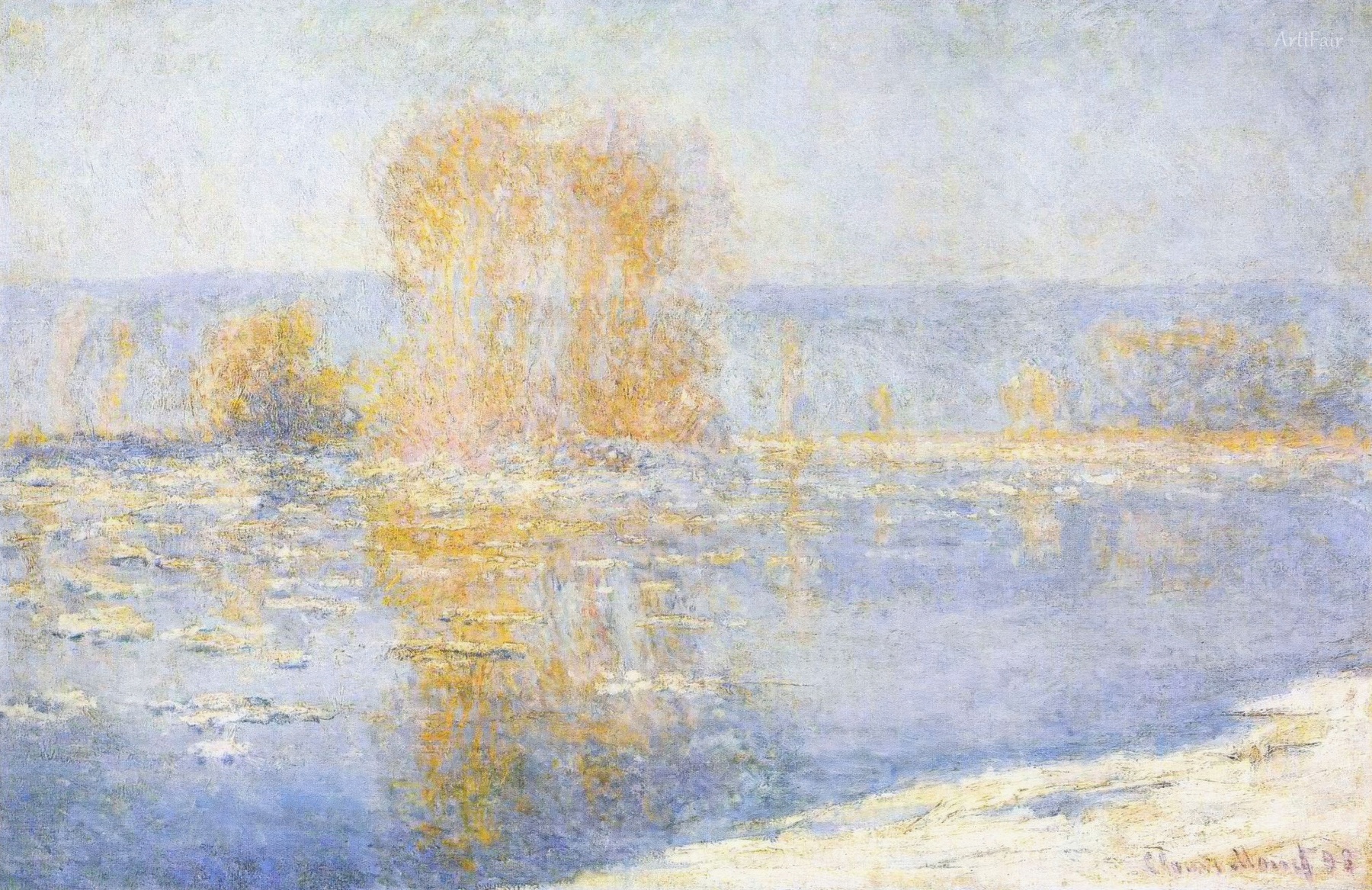
Art Appreciation
This enchanting artwork captures the serene beauty of floating ice by the river near Bennecourt, enveloped in a soft, ethereal haze that seems to breathe a gentle tranquility into the scene. The brushwork is expressive yet delicate, with Monet employing a palette dominated by soft blues, muted yellows, and ghostly whites that meld seamlessly to evoke both the coldiness of winter and the warmth of a dawning sun. Shimmering reflections on the water surface create a dance of light, while the merging colors reveal fragments of life beneath the ice—an entrancing interplay of the ephemeral and the enduring.
As you absorb the painting, it's impossible not to feel swept away by the tranquility it exudes. One can almost hear the faint rustle of wind through the trees and feel the cool, crisp air that accompanies such a frigid landscape. Monet’s choice of colors invites the viewer to lose themselves in the fleeting beauty of nature, a reminder of the seasonal transitions that shape our environment. Beyond its aesthetic value, this piece serves as a historical marker, evoking the Impressionist movement of the late 19th century, where painters like Monet sought to capture the transient effects of light and atmosphere. In doing so, he not only conveyed a literal scene but also an emotional landscape that resonates deeply with the audience, compelling us to pause, reflect, and appreciate the beauty of the natural world.